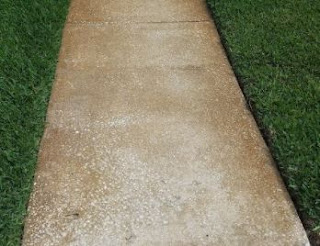Need Some Help Restoring Damaged Marble Floors in Your Home?
Need Some Help Restoring Damaged Marble Floors in Your Home?
Marble floors in any home represent one of the most desirable stone on the market, due to its look and its supreme resilience. However, they’re not invulnerable to damage and when it occurs, it’s time to turn to professional marble restoration services like ours.
At Tile Cleaning Agents, we have years of experience in marble tile restoration and so we know a thing or two about how to approach the repair process. As we aspire to be a helpful team, we thought we would provide you with some advice on what to do when your marble flooring needs some TLC.
In many cases, there may be a way for you to prevent or
manage any damage that occurs, and even if you can’t, our professional marble
repair team is always there for you. So don’t panic or do anything that might
make the problem worse.
Removing Scratches from Marble
Vinegar Stain on Marble

This picture shows a large spillage on a limestone floor. This particular limestone is quite compact and smooth with similar characteristics to marble. You can't always see the spillage stain when standing above it but it's visible when the light reflects across the surface. Restoring this floor produced the most beautiful shine and you would never have known there was a spillage there.
Efflorescence in Stone Floors

In order to keep it under control before your next marble
repair appointment, we’d recommend scrubbing the floor with a medium-strength
brush (not too hard) with a neutral pH stone cleaning solution. It might come
back, which would lead you to repeating the same measure again.
This picture was taken of a patio that had no barrier between the cement and the stone. It clearly shows the underlying cement been squeezed to the outer edge of the patio floor.
Re-grouting Stone Floors
At first, the tiles seemed to be made of concrete because it had a perfect man-made pattern on the surface which turned out to be glue spots. Who would’ve guessed that as the tiles were cleaned, little fossils started to appear below the dirt!
The surface was sealed, with the dirty old grey grout and mud being replaced with a lighter “praline” colour before the tiles were sealed again. Today the floor feels much more inviting, like a home. Certainly, a job for professional marble repair specialists rather than one you can tackle yourself.
Correcting Lippage in Marble Floors
The diamond pads that marble repair professionals use to restore the shine to stone floors are usually stiff discs made of resin that cannot bend, and lippage can cause these discs could crack during the service. If we’re lucky enough to be able to restore this type of floor without damaging our discs, the overall appearance of the marble floor could result in what’s known as the picture-framing effect. This is because the discs were not able to reach the lower portion of the tiles around the edges.
Here’s an example of a picture frame effect. For this reason many suppliers have started to manufacture softer sponge-type pads that are more flexible and can reach these lower sections of the tiles. However these types of pads produce a surface with an orange-peel effect that has low clarity of reflections, rather than a super-flat mirror finish.
It’s still a beautiful shiny result, but the clarity is not
as vivid and the tile starts to feel a little lumpy. This is because the sponge
gently knocks out small particles of softer stone, leaving behind the harder
material. In some limestone tiles, which consist of bumpy little particles, it’s
not a very attractive result. On the other hand, the denser Carrera marble
stone with wavy patterns can produce the most beautiful leather-like surface
that’s very interesting look at and feel as it reveals the natural curves of
the stone’s formation.
Need Help with Marble Repair Issues? Call Us Today!
If you’d like a free quote for your marble restoring needs,
all you need to do is enter your details into our contact form on our website here: https://www.tilecleaningagents.co.uk/ and we’ll get
back to you as soon as possible. Alternatively, if you’d like to speak to us
directly, give us a call today on 01344 374671 or send us a text at 07919 624005.





Comments
Post a Comment